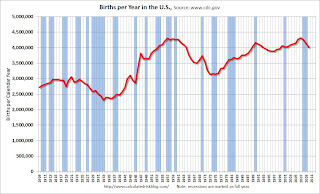This recent post from Lawn & Landscape News provides an excellent overview of the state of university horticulture programs across the country. Well worth the read.
****************************************************************************
 Earlier this year, Newsweek listed the Top 20 most useless degrees. And sitting close to the top at No. 2 was horticulture. (Don’t feel bad, journalism was No. 1.)The ranking was based on data that included the industry’s median starting salary ($35,000), median mid-career salary ($50,800) and percentage change in the number of jobs from 2008-2018 (-1.74). And the ranking reiterated many of the reasons university and college horticulture programs say they’re having trouble attracting students – the public’s perception is salaries are too low and a degree is, well, useless for a career that could involve planting and mowing.”Parents are sending their children to business school – the business schools are swelling,” says Roger Harris, professor and head of the horticulture department at Virginia Tech University. “There’s a perception that people don’t know what horticulture is … and there’s a perception that they can’t make a good living, which is totally false. Our students are making near the top of the college, as far as starting salaries. They’re working for competitive companies.” Earlier this year, Newsweek listed the Top 20 most useless degrees. And sitting close to the top at No. 2 was horticulture. (Don’t feel bad, journalism was No. 1.)The ranking was based on data that included the industry’s median starting salary ($35,000), median mid-career salary ($50,800) and percentage change in the number of jobs from 2008-2018 (-1.74). And the ranking reiterated many of the reasons university and college horticulture programs say they’re having trouble attracting students – the public’s perception is salaries are too low and a degree is, well, useless for a career that could involve planting and mowing.”Parents are sending their children to business school – the business schools are swelling,” says Roger Harris, professor and head of the horticulture department at Virginia Tech University. “There’s a perception that people don’t know what horticulture is … and there’s a perception that they can’t make a good living, which is totally false. Our students are making near the top of the college, as far as starting salaries. They’re working for competitive companies.”
Advancing programs. As federal and state budgets were cut, it’s no surprise the trickle-down effect of that tightening hit hard many universities and colleges. Hort programs have seen budget cuts as high as 19 percent. Those who haven’t seen decreases have worked with flat budgets, which essentially equates to a reduction. The cuts have meant the loss of faculty, extension and research programs. It’s meant horticulture departments merged with other departments. And it’s meant an increasing number of programs have looked externally for non-state sources of funding. For example, at Penn State, tree care companies and the fruit and vegetable industries have helped pay either for teachers’ salaries or operating expenses. A trend Rich Marini, professor and head of the horticulture department, hopes the rest of the industry catches on to. “The nursery and landscaping industries have been almost totally non-supportive in the past,” he says. “I think the future for the landscape and nursery programs at most universities (is) as tenured track people retire, they will probably be replaced with – as long as we have enough students – instructors, nine-month appointments, instructors with one to three year contracts.” The changes in recent years haven’t all been gloom. Departments retooled to meet the needs of incoming students and the industry. A glimpse of how things have changed in the last decade: Michigan State University added a Sustainable and Organic Horticulture concentration. Virginia Tech’s landscape contracting students receive a minor in entrepreneurship. Colorado State University changed the name of its landscape horticulture major to environmental horticulture and added a landscape business concentration. Why the change? “There were two main reasons: One was that name better reflects the nature of the program in a broader sense,” says Steve Wallner, professor and head of the department. “When you’re talking about the curriculum and what those students are interested in and hope to wind up doing, it really is all about outdoor spaces and outdoor environments, so environmental horticulture made sense from that point of view. Secondly, we thought it would be more appealing to students from a recruiting sense.” Texas A&M University designed a degree with less science and more business and design skill emphasis in hopes to draw more students to the program. “The biggest change in the last five years has been our new BA degree program which has brought in some talented students that we would not have attracted previously,” says Tim Davis, former head of the horticulture department. Of the schools Lawn & Landscape spoke with, the answers about whether the student population was decreasing or increasing were mixed. Many department heads said their horticulture majors have declined in enrollment, but landscaping majors or concentrations in landscaping, viticulture, enology and organic ag have held steady or increased. (See sidebar above.) Since receiving PLANET accreditation in 2003, Brigham Young’s landscape management program has seen enrollment increase from about 75 students to about 200. During that time, production horticulture was also eliminated, said Phil Allen, professor of landscape management. Virginia Tech had about 150 undergrads in its hort program 15 years ago; the numbers dropped steadily for years and recently stabilized around 85. Harris says he pinpoints a few reasons for the decline – similar reasons multiple department heads gave. No. 1, horticulture isn’t seen as a “professional” industry to many. No. 2, land-grant universities with large engineering and business schools have raised the entrance bar and put caps on the number of students, making it difficult for students interested in any field to get accepted. No. 3, the number of students transferring from community college systems or two-year programs has declined. “I think the community college system is suffering a little bit,” he says. “I think people are deciding to keep working instead of going to school because it’s an economic thing – they don’t know if it’s worth it or not. The hort programs that were feeding us a little bit, some of them have been discontinued – community college programs.”
“I encourage students to consider areas where supply and demand ratios are very favorable, and areas where the demand is greatest include irrigation, and the account manager trainee type position and also plant healthcare or tree healthcare and arboriculture,” Allen says. “Those areas we could triple the number of students we have and every one of them could have multiple job offers when they graduate.” “There is more big players nationally or even regionally that now have resources to do recruiting, where maybe 10-15 years ago there were only a few of us that really could spend the money or have the resources to go after colleges,” Beidler says. “Now they have a representation (at colleges and job fairs), so that’s why the competition has increased.” Another trend companies have seen is a change in graduates’ expectations. Beidler says he has seen an increase in the number of students interested in design, estimating or management jobs right after graduation, but there are only so many of those positions available, and especially within a commercial landscape maintenance company like Brickman. “There is less eagerness among current college graduates to go into more physically demanding jobs,” says Gordon Ober, vice president of recruiting and development for the The Davey Tree Expert Co. “Many of today’s college students are also not as eager to work longer hours or pick up and move far away from home. Also, upper ranking students are not as willing to start at the bottom to learn the business and work their way to the top. They want a defined, short-term roadmap for advancement up and out of production positions. They expect to start as management trainees, account representatives/managers or supervisors.” Still, those in the industry say the quality of student being produced is still high. Brett Lemcke, vice president of R.M. Landscape and chairman of PLANET’s Student Career Days says the students he runs into at the annual event and at job fairs are the ones companies want to recruit because they show a real effort and enthusiasm for the industry. “The quality (of students) is very strong,” he says. “They’re new to the industry, so they have a lot to learn but, at the same time, they’re willing to learn. They understand why we’re all here and what the business is about.” Experience in the form of internships is one thing Beidler and Ober say they wish more graduates had on their resumes. The solution to that is two parts: Colleges requiring students perform internships in the field before graduating and more companies offering the opportunity. William Vance Baird, professor and chair of Michigan State University’s Department of Horticulture, says internships should extend to high school students, which would give them an early experience and connection to the industry. “Most of our students get interested in majoring by having some positive contact with horticulture,” he says. “The best recruiter is someone who gives them a chance to do something more with plants than dig holes and/or pull weeds all day; then they see that this can be a career. If companies can provide summer employment for high school students that is varied in scope and includes a few days shadowing the bosses, for example, or a trip to an industry event like an expo or a field day, it can really open their minds to what is possible.” From the university and college perspective, they’re trying to brand the industry as technical and professional and with resurgence in all things organic and eco-friendly, departments are pushing the message that the horticulture industry is a steward of the environment. They’re not only going after high school students but those already on campus that are undeclared. “Students are interested in making the world a better place, making a difference,” Baird says. “Stress the positive contribution to the environment and quality of life made by our industries.” But they can only do so much without the industry’s help. Many department heads say higher starting salaries would help. As well as the industry playing a larger role in helping high school students – or even younger – understand what it is the industry does. Marini says when he arrived at Penn State he thought he had an easy recruitment solution, just visit high school science classes and college fairs. “I quickly found out that we weren’t allowed to do that,” he says. “There are so many college recruiters attending high schools trying to recruit students that the high schools limit the number of times any university can visit them. So if Penn State can only go into a high school once, they don’t want the head of the horticulture department going.” There are initiatives taking place with high school and middle school students – PLANET is involved with Future Farmers of America and has put together recruiting pieces and worked with state associations to promote the green industry – but every company can be part of the process, Lemcke says. “Contact local horticulture programs or get into high schools and just talk about, as business owners or managers, the success you have, how fun and creative your jobs are and start pushing (the industry) that way,” Lemcke says. “As industry people, if we can go after (schools) and say, ‘Hey, I’m available, sign me up for whatever,’ that would help with momentum, getting people on board and filling up these classrooms.” |
 A bright spot is that even with a national unemployment rate hovering around 9 percent, horticulture students are finding jobs. The number of job offers might not be as high as they once were, but there are still positions in most areas.
A bright spot is that even with a national unemployment rate hovering around 9 percent, horticulture students are finding jobs. The number of job offers might not be as high as they once were, but there are still positions in most areas.

